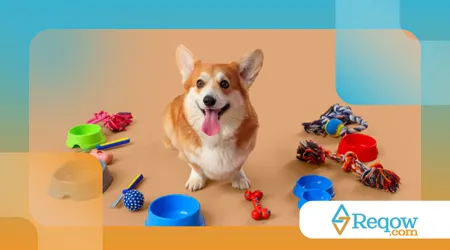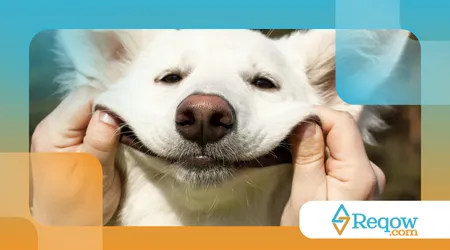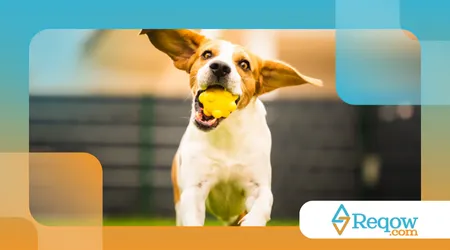Games that help with training and strengthen the bond

To the Games that Help with Training represent the most effective way to build a solid and harmonious relationship with your dog.
Advertisements
Thus, far from being just a pastime, play is the universal language of dogs. Play transforms learning into fun and positive reinforcement into pure shared joy.
The Science of Fun: Why Is Play So Powerful?
Playing stimulates your pet's mind and body, being vital for their well-being.
This natural activity helps channel energy, preventing destructive behaviors caused by boredom or anxiety.
In other words, a dog that plays regularly is a happier dog and less prone to problems.
Advertisements
Through play, the animal learns social rules, boundaries and, crucially, to trust its owner.
Play strengthens communication because the dog focuses on you. Playful interaction is a powerful way to positive reinforcement that cements leadership in an affectionate way.
The Unbreakable Bond: Play as a Trust-Building Tool
Mutual trust is the cornerstone of any good training. When you play with your dog, you demonstrate that he or she is a source of pleasure and security.
That is, it creates a strong positive dependency and a genuine desire to please.
The emotional connection generated surpasses any formal command. The dog understands that your presence is associated with moments of happiness.
According to recent data from the National Union of the Animal Health Products Industry (Sindan), in 2024, 78% of dog owners in Brazil already considered their pets as members of the family.
This underscores the growing depth of this bond.
This humanization reinforces the need for meaningful interactions. Quality play is the best way to meet this emotional need.
It's a direct investment in your four-legged friend's mental and behavioral health.
Ludic Strategies: Transforming Games into Effective Commands
Training does not need to be a rigid activity, based only on repetitive commands.
We can integrate basic and advanced commands into playtime. This way, the dog associates obedience with something extremely pleasurable.
Controlled Search
The classic "Fetch" can be a powerful self-control tool. Teach your dog to wait before being allowed to retrieve the toy.
Read more: How to Correct Excessive Barking in Dogs
Waiting teaches the "Stay" command, and returning hones the "Come" command. It's a way to practice impulse control at the height of arousal.

Hide and Seek with Commands
Playing hide-and-seek improves recall and focus. Your dog uses his sense of smell and hearing to locate you. Call him enthusiastically, rewarding him with affection and treats when he finds you.
Find out more: Has your pet learned, but “forgets” when you’re away from home?
This game stimulates the hunting instinct in a safe and guided way. It also reinforces the idea that the owner is the center of the pack. Finding you is the greatest reward of all.
Types of Games that Help with Training
Each type of game stimulates different skills in your dog.
Variety is essential for complete cognitive development. Dog training should be dynamic and engaging.
| Type of Play | Stimulated Mental Ability | Integrated Command | Benefit in the Bond |
| Tug of War with Rules | Impulse Control, Get/Release | “Let go”, “Grab”, “Wait” | Respect, Trust at the Limit |
| Treasure Hunt (Smell) | Concentration, Focus, Problem Solving | “Search”, “Find” | Patience, Strengthening the Partnership |
| Simple Agility (Domestic) | Motor Coordination, Distance Obedience | “Jump”, “In”, “Back” | Clear Body Communication |
| Playful Tag | Socialization, Controlled Energy | “Come”, “Stop” | Affective Connection and Joy |
Smart Tug of War
Tug-of-war, when performed well, is excellent for teaching the "release" command. You should always be the one to start and finish the game, ensuring control.
The dog learns that the game only continues if he obeys the rule of leaving it when asked.
Look how interesting: Get your pet used to transportation: car, bus, and plane
It's not about physical strength, but about emotional control and obedience.
This is one of the Games that Help with Training most effective for teaching limits. This game should always have clear breaks and well-defined rules.
Treasure Hunt and Games that help with training
Turn mealtime or treat time into a hunt. Hide food or treats around the house or garden. This taps into your dog's most acute sense of smell and keeps them mentally active.
Ask your dog to "Sit" and "Stay" in a room while you hide treats in a sniffing mat. When you give the command "Find!", he starts searching.
This activity improves focus and the ability to work alone, reducing separation anxiety.
Integrating Commands into Daily Activities
Consider the joke as an analogy of a contract.
You provide the fun, the dog delivers the obedience. Both parties benefit, and the relationship deepens. Training flows smoothly.
Use your surroundings to create mini-playful training sessions.
When walking in the park, use a pole as an obstacle for the "Back" command. Or ask for a "Sit" before throwing the ball.
Create an "Obedience Course" in your backyard. Use a child's tunnel and some cardboard boxes for your dog to climb over.
Ask "Crawl" to get through the tunnel and "Jump" to the box. The reward is completing the circuit and finding your favorite toy.
This approach shows the dog that obedience opens doors to more freedom and fun. It's not a restriction, it's a key.

The Human Element: Presence and Voice
Your tone of voice makes all the difference in playful training. It should always be cheerful, encouraging, and consistent. Positive reinforcement isn't just treats; it's your genuine energy and joy.
A study published in the scientific journal Scientific Reports revealed that owners report greater satisfaction with their dogs than with any human partner, except children.
This emotional intensity is the basis for accelerated learning. The dog senses its owner's satisfaction and associates it with its own behavior.
Be a fun, predictable, and consistent leader. Consistency is the bridge between fun and discipline.
What's the best sound for your dog: the sound of a treat or your laughter when he gets the command right? The answer lies in the quality of the bond.
Essential Tips for Success with Games that Help with Training
Keep play sessions short and exciting, especially with puppies or dogs with shorter attention spans.
Always end the game on a high note. This maintains anticipation and interest for the next session.
Use specific toys for each type of play, distinguishing them from those he uses alone.
This increases the perceived value of the toy when you're present. Remember, you're in control; you set the rules and the pace.
Training through play eliminates pressure and conflict. It creates a balanced, confident dog that is deeply connected to its owner.
To the Games that Help with Training are, in fact, lessons in happiness.
Frequently Asked Questions
Do games make your dog disobedient or very agitated?
Quite the contrary. Structured, rule-based games, like tug-of-war with the "Drop It" command, actually increase a dog's control over their impulses, making them more balanced and focused, rather than more agitated or disobedient.
What is the best time of day for playful training sessions?
The best times are when the dog is active but not exhausted.
Generally, after waking up or in the late afternoon, before your last meal, are ideal times. Sessions of 5 to 10 minutes are more effective than one long, tiring session.
Are only toys valid as rewards for playing?
No, the reward should be varied. It could be a treat, enthusiastic vocal praise, or the toy itself.
The use of toys, as in Games that Help with Training, increases the value of the interaction, but the most valuable reward is always the affection and attention of the tutor.
++ Interactive dog games that are fun
++ Tips for Including Children in Dog Training
